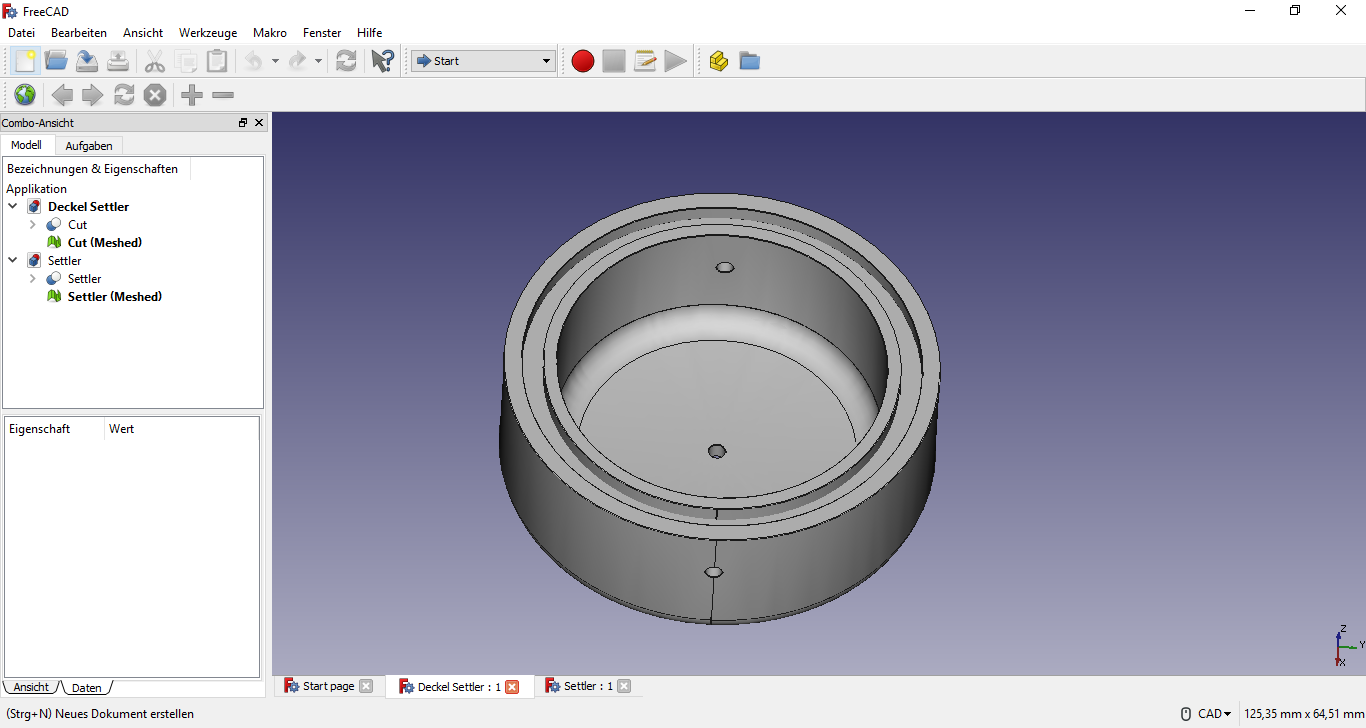| Line 88: | Line 88: | ||
The printing of metal nanoparticles allows for a quick prototyping and in combination with the special properties of metal nanoparticles very thin layers made of moderately heat stable materials becomes possible. </article> | The printing of metal nanoparticles allows for a quick prototyping and in combination with the special properties of metal nanoparticles very thin layers made of moderately heat stable materials becomes possible. </article> | ||
<article> | <article> | ||
| − | To show that nanoparticles can indeed be made conductive at relatively low temperatures we ordered copper nanoparticles and either processed them further for creating a printable ink or used them directly for the production of conductive lines without further additives. </article><article> | + | To show that nanoparticles can indeed be made conductive at relatively low temperatures we ordered copper nanoparticles with a size of 40 nm and either processed them further for creating a printable ink or used them directly for the production of conductive lines without further additives.</article><article> |
| − | Since copper NP are known to oxidise when coming in contact with air all experiments needed to be done under N2 atmosphere.</article> | + | Since copper NP are known to oxidise when coming in contact with air all experiments needed to be done under N2 atmosphere. For that we used a plastic bag with inlets for the hands which was filled with N2 gas.</article> |
<figure role="group"> <img class="figure hundred" src="https://static.igem.org/mediawiki/2018/7/7a/T--Bielefeld-CeBiTec--cg--N2Atmosphere.png"> | <figure role="group"> <img class="figure hundred" src="https://static.igem.org/mediawiki/2018/7/7a/T--Bielefeld-CeBiTec--cg--N2Atmosphere.png"> | ||
| Line 104: | Line 104: | ||
<article> | <article> | ||
| − | Beside the advantage of being easily processed into metallic inks and printed into any 2D shape the high surface energy of metal NP leads to a much lower melting point compared to metallic particles with micrometer scales. When NPs are heated to around 200°C they melt and fuse together to form a solid surface (Sunho Jeong et al., 2011). | + | Beside the advantage of being easily processed into metallic inks and printed into any 2D shape the high surface energy of metal NP leads to a much lower melting point compared to metallic particles with micrometer scales. When NPs are heated to around 200°C they melt and fuse together to form a solid surface (Sunho Jeong et al., 2011). Our experiments showed that 250°C was not enough to produce conductive structures with measurable conductivity. Instead we had to reach a temperature of 340°C to end up with conductive structures. This is remarkable when looking at the melting temperature of bulk copper which is as high as 1085°C. |
</article> | </article> | ||
| Line 114: | Line 114: | ||
</figure> | </figure> | ||
<article> | <article> | ||
| − | For Cu-based nano inks, better conductivity is achieved when elemental Cu NPs are used. | + | For Cu-based nano inks, better conductivity is achieved when elemental Cu NPs are used. Since copper oxide (CuO) NPs are formed when the NP are produced under aerobic conditions we tried to alwas avoide contact with air when working with the Cu NPs. CuO NPs have lower conductivity therefore a protective coating layer applied to the Cu NPs is often used to prevent oxidation prior to sintering. |
</article> | </article> | ||
| Line 121: | Line 121: | ||
<figure role="group"> <img class="figure hundred" src="https://static.igem.org/mediawiki/2018/5/52/T--Bielefeld-CeBiTec--cg--ConductiveCopper.jpg"> | <figure role="group"> <img class="figure hundred" src="https://static.igem.org/mediawiki/2018/5/52/T--Bielefeld-CeBiTec--cg--ConductiveCopper.jpg"> | ||
<figcaption> | <figcaption> | ||
| − | <b>Figure 3:</b> Measuring the electrical resistance of our | + | <b>Figure 3:</b> Measuring the electrical resistance of our copper nanoparticle prints. Display shows an resistance of 0.9 Megaohm. |
</figcaption> | </figcaption> | ||
</figure> | </figure> | ||
<article> | <article> | ||
| − | The use of commercial inkjet printers for printing NP based ink allows for a very low hurdle of entry into the area of do-it-yourself (DIY) electronics (Yoshihiro Kawahara. et al., 2013). Our tests also showed that it is possible to use a commercially available household printers for printing different solvents which can be used to create copper inks. | + | The use of commercial inkjet printers for printing NP based ink allows for a very low hurdle of entry into the area of do-it-yourself (DIY) electronics (Yoshihiro Kawahara. et al., 2013). Our tests also showed that it is possible to use a commercially available household printers for printing different solvents which can be used to create copper inks. Unfortunately the print head of standard printers easily clogs when copper nanoparticles (40 nm) are added to the ink. Therefore we recommend more traditional printing methods like screen printing for the low cost production of electronics made from metal nanoparticles. </article> |
<figure role="group"> <img class="figure hundred" src="https://static.igem.org/mediawiki/2018/e/e4/T--Bielefeld-CeBiTec--cg--Cu_molten39.png"> | <figure role="group"> <img class="figure hundred" src="https://static.igem.org/mediawiki/2018/e/e4/T--Bielefeld-CeBiTec--cg--Cu_molten39.png"> | ||
Latest revision as of 10:39, 6 December 2018

Hardware
Short Summary
Printing Electronics

Silver has the highest conductivity and does not oxidize making it a popular choice for flexible electronics. Gold on the other hand is very expensive but has the advantage of not reacting with biological systems.



Design of a Cross-flow Bioreactor





Raut, N. C., & Al-Shamery, K. (2018). Inkjet printing metals on flexible materials for plastic and paper electronics. Journal of Materials Chemistry C, 6(7), 1618-1641.


